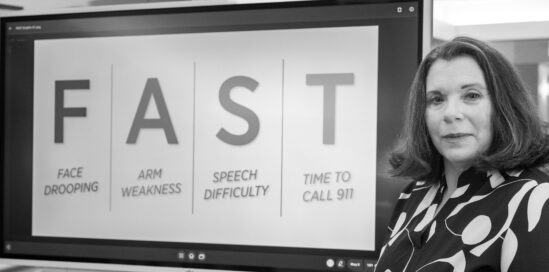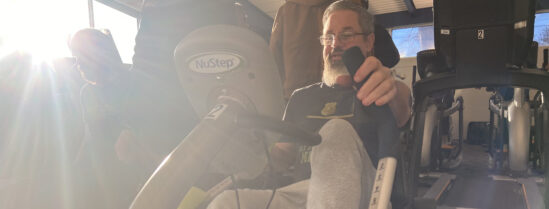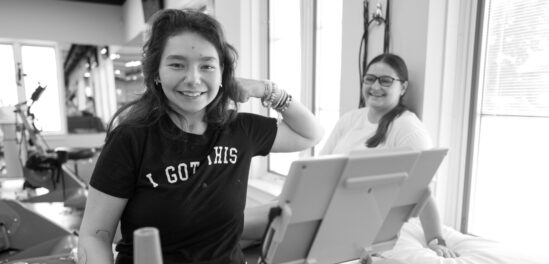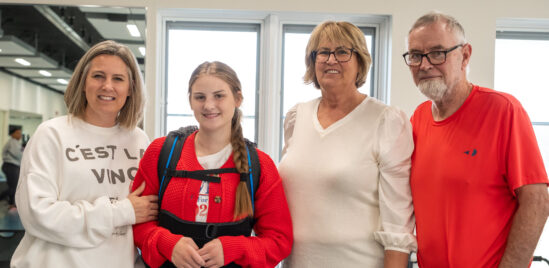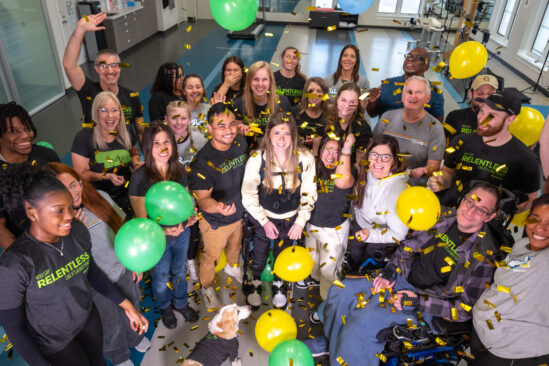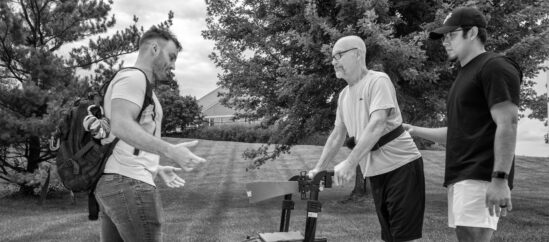Driving offers freedom – the ability to go wherever you want, whenever you want. It offers us access to the world – everything from a trip to the corner coffee shop every morning to the family’s annual vacation to Disney. It is one of the many things we, as a society, take for granted. Without that access to driving and our lives would quickly become a whirlwind of navigating public transportation, begging for rides, or walking long distances just to do what we formally could do without a moment’s thought.
After a neurological injury, driving is often taken off the proverbial table nearly immediately. Following a spinal cord injury, the physical barriers prevent drivers from transferring into a vehicle, clicking turn signals, steering the wheel, or pushing the pedals. With a brain injury, cognitive or visual deficits may make an individual unsafe for an immediate return to driving. Seizures can be common following an injury to the brain and many states require a period of suspension and clearance from their physician following any seizure activity.
Adaptive driving programs were created to provide formal and functional testing to assist drivers to get back on the road after injury. A driving program is not appropriate for every person and applicants must meet certain requirements, the main being:
- Physical: These requirements are in place to determine whether a program will be low-tech or high-tech. Assessments include testing a prospective driver’s range of motion, manual muscle testing and sensation, and transfer ability.
- Cognitive: Before starting a driving program, a prospective driver’s independent daily living ability is measured. The MoCA (Montreal Cognitive Assessment) is the standard tool that rates to what degree the individual can independently manage their home life, work activities, medication, or finances. While the specific assessment could change in the future, the core focus of the measurements of independence would remain the same.
- Visual: The visual standards vary from state to state, and include standardized assessments for oculomotor skills and acuity. To be approved, for example, for driving in Nebraska, the prospective driver must have 140 degrees of peripheral vision in both eyes, as well as a minimum of 20/40 vision without restrictions. This is tested through an OPTEC machine and the Motor-Free Visual Perceptual Test.
QLI is proud to offer no-tech, low-tech, and high-tech adaptive driving programs. The program, led by occupational therapist and driver rehabilitation professional, Melissa Faller, begins by inquiring how the 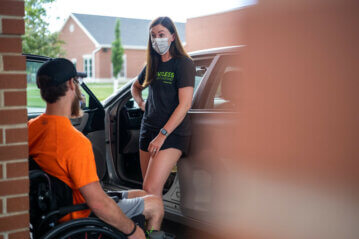 client drives, where they drive, and why they drive. Will they drive primarily to commute to and from work? Simply running errands? Is it long- or short-distance travel? What type of roads are on these routes—paved city streets, dirt roads, or strictly low-speed residential roads?
client drives, where they drive, and why they drive. Will they drive primarily to commute to and from work? Simply running errands? Is it long- or short-distance travel? What type of roads are on these routes—paved city streets, dirt roads, or strictly low-speed residential roads?
The next step begins not in a vehicle but in a clinical setting with a full cognitive and visual assessment of the driver. As mentioned above, the MoCA, OPTEC, and Motor-Free Visual Perceptual Test are administered by a therapist. If the potential driver falls within the requirements, the driver is ready to graduate to real-world practice. Faller introduces short-distance and low-speed drives around QLI’s rehabilitation campus. Once that low-speed and low-traffic environment is mastered, the driver progresses in complexity from parking lots to public streets, intersections, to main roads and highways.
“If a client commutes to work on busy interstates or highways, we’ll drive similar-intensity routes in the Omaha area,” says Faller. Likewise, for clients from smaller towns or more remote locations, these kinds of roads and traffic may be impractical. Every program is unique.
The degree to which adapted devices are involved in the vehicle determines if the type of program is low-tech or high-tech. Low-tech programs are pursued when a driver has considerable ability through some of their limbs, namely, their hands. These programs repurpose functions of the car like gas and brakes for a driver’s upper extremities when they may not have movement or strength in their lower extremities to navigate these pedals. This is exhibited in devices like a “push-and-pull.” The driver pushes the device to engage the brake and pulls it to give the car gas, but requires that their hand be on the device, in a pulled forward position to maintain speed, taking up a good deal of strength. The device is typically placed below the steering wheel.
A similar device is a “push-and-rock.” Placed beside the steering wheel, the device looks like a slot machine arm, which the driver simply needs to rock down for gas, and push forward for brakes, not requiring a constant hand on the device, and allowing for greater steering wheel control.
Other adaptations can be made for hemiplegia, or when only one side is affected by an injury – often from a stroke. For example, for a driver with a left-sided stroke (affecting their right side), a left-footed accelerator pedal can also be installed. Individuals with either brain or spinal cord injuries can benefit from a spinner knob. This is a tool designed for ease of turning the steering wheel, especially with one hand. Clamps for the knobs are placed along the surface of the wheel (with one every few inches), and they can easily be removed and replaced for each respective client or other drivers sharing the vehicle.
For individuals with significantly limited motor function, a high-tech driving program may be a more appropriate option to pursue. Both complete and some degrees of incomplete spinal cord injury may leave a driver with weakened function in their hands. This limits a driver’s grip and strength that wouldn’t  be suited to a low-tech setup. The higher along the spinal column an injury occurs, the more likely it is that the hands will be impacted. The weakened function could mean a lack of innervation to actively grip a standard steering wheel. Additionally, spinal cord injuries may significantly impact leg function. In addition to weakened hands, drivers may not have the required function in their legs to press the gas or brake pedal. Therefore, high-tech programs must utilize all-encompassing technology.
be suited to a low-tech setup. The higher along the spinal column an injury occurs, the more likely it is that the hands will be impacted. The weakened function could mean a lack of innervation to actively grip a standard steering wheel. Additionally, spinal cord injuries may significantly impact leg function. In addition to weakened hands, drivers may not have the required function in their legs to press the gas or brake pedal. Therefore, high-tech programs must utilize all-encompassing technology.
Not only are steering and gas/brake functions adapted, but so too are secondary controls—centralizing functions such as turn signals, headlights, and windshield wipers. These may be displayed on a touch screen off to the side of the steering wheel or could be voice-activated. By centralizing these functions, drivers with limited mobility (or, for example, those that have their hands occupied by a steering wheel or other hand controls) would still be able to execute them quickly. Often, with drivers in a powered wheelchair, further modifications to high-tech vehicles are made to allow both a ramped entry and space for the powered chair to act as a traditional driver’s seat might.
These programs are a specialty for QLI—the only one within the state of Nebraska that offers high-tech capabilities. Faller is the only occupational therapist in the state of Nebraska certified to aid clients in high-tech driving. For certification, Faller underwent a course with EMC (Electronic Mobility Control), 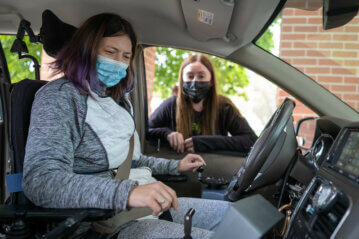 learning how to use the AEVIT system, which is wired into the car through three types of devices discussed below. This allows clients with limited motor function to relearn driving with this technology. Not only is leg and foot function permanently impacted by a complete injury.
learning how to use the AEVIT system, which is wired into the car through three types of devices discussed below. This allows clients with limited motor function to relearn driving with this technology. Not only is leg and foot function permanently impacted by a complete injury.
Somewhat similar to the low-tech system, QLI’s high-tech vehicle has an electronic gas/brake lever, which is mounted in many positions to meet the driver’s needs. To the left of the steering wheel is a mini-wheel device (one of the three AEVIT devices) that contains a knob that spins around a level surface. The van responds to the mini-wheel’s turns and movements in real time.
Along the path of where the gear shift usually sits is a touch-screen console, which controls all the secondary functions of the car—the gear shift, blinkers, headlights, windshield wipers, radio, etc. Additionally, the front driver’s seat can be removed from the car, allowing for an individual in a power chair to enter the van through a ramp, have the chair locked down into place, and drive the car from their chair without having to transfer.
Some adapted wheel controls—like the “joystick,” the third AEVIT device, can operate steering, gas, and brakes. Pushing the joystick forward will trigger the gas, backwards the brakes, and the left and right 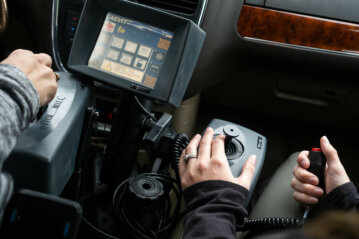 sides for the steering. This is typically used for an individual with only one functioning upper extremity.
sides for the steering. This is typically used for an individual with only one functioning upper extremity.
No matter the concerns of the driver coming into QLI’s programs, Faller has the expertise to guide them and determine what their customized low- or high-tech driving system will look like. Not only can the drivers be more informed following a discussion with Faller, but they will be one step closer to putting the car in drive and accessing their world once more.
The high-tech driving program at QLI is available as an inpatient or outpatient program.





